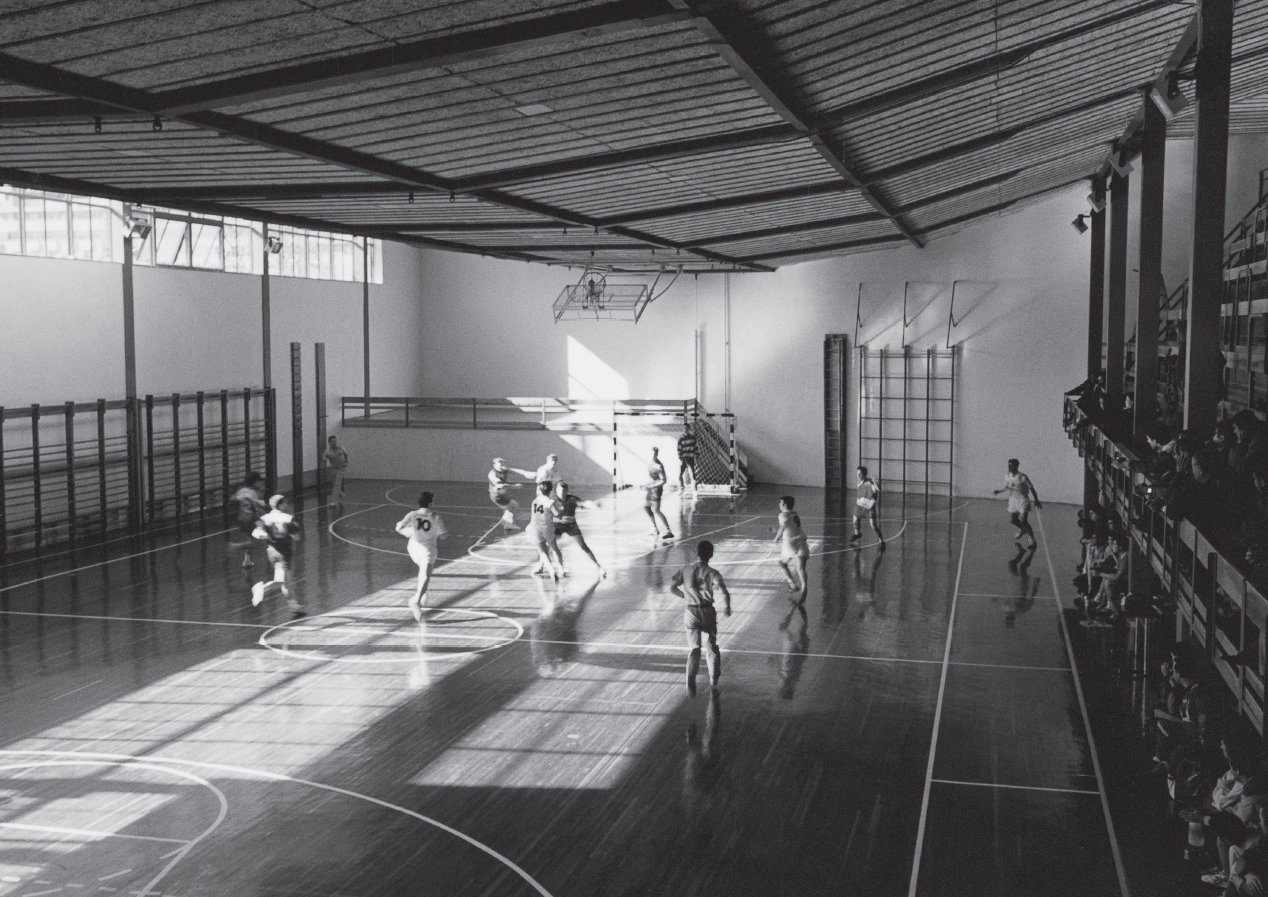CLOSE ENCOUNTERS: MEETINGS WITH REMARKABLE BUILDINGS
Inventing space for action Maravillas Gymnasium, Madrid, Spain Alejandro De La Sota
The freespace of time and memory, binding past, present and future together, building on inherited cultural layers, weaving the archaic with the contemporary
- From Curators' Manifesto
Proposal for Free Space
In the context of Biennale Architettura 2018, 16th International Architecture Exhibition, the curators Grafton Architects invited me to examine a work from the past that embodies the values encapsulated in the free space manifesto around which this exhibition is conceptually situated . I am exploring the Maravillas
Gymnasium in Madrid by Alejandro de la Sota, constructed in 1962. I have explored this building in respect to the manifesto and using my own methodologies of analysis through lived experience.
Visit
I visited the building on a crisp sunny Sunday morning in late November. I had arranged the meeting with the school administrator H. Atilio Proenza González. The school is in a gentle suburb of Madrid, I walked there from my hotel, a journey of about 1 hour through quiet Sunday morning mass going dog walking suburbs.
Señor González, a neat elderly man in Sunday casuals, invited me in to the school. Upper class well healed Catholic Nineteenth Century. We started on a tour of the original part of the school with which he is very obviously in love. I speak no Spanish and he no English yet he spoke to me without pausing for breath for the duration of the visit. We met no one. Quiet sombre ordered.
We went down stairs and through a door into the world of Alejandro de la Sota. He pointed me toward the handrail detail designed not to snag clothes which he demonstrated, I wasn’t looking though….
We were in the world of de la Sota and there were people everywhere, people and steel frames and wood wool ceilings. A multitude of teenagers were running around in fancy dress, pirates, Greek goddesses, Vikings, soldiers, Roman centurions, below us a football game was in progress. As we travelled around, up down and around we met swimmers below and basketball players above outside, on top. It was an explosion of people having fun.
If I thought that Señor González was in love with the quiet world of the smart Nineteenth Century school it was nothing in comparison to the ecstatic passion he held for the Arte Povera school of de la Sota, basic materials, exposed structure and people people people. It seemed like the secret he kept downstairs out of sight of good society, the affair with the unsuitable mistress.
Shaking his hand, I gave him a bottle of nice Cava and was back out into the quiet street. Still quivering from complete over excitement.
Analysis vs Experience
My passion for architecture is my passion for the world, the experienced world. I am interested in researching by doing things, by taking action, and then reflecting upon what I have done in order to learn. If you want to learn how to dance you have to start dancing!
My original interest was in the ground of this project, the earthworks. This was derived from the examination of sections and plans of the project and connecting these to currents in my own work of the earthwork move.
My visit came later and as is usual for me the lived experience (or rather my later reflection on it) was clearer and more exciting.
Inventing Space for Action
De la Sota creates a three-dimensional arena for action, it is a spectacle that people partake in, they invent and reinvent this action on a daily basis. He invented the space for this with the brute force of raw structure and simple material.
The model we propose for the Biennale is concerned with people, actors held in previously unimagined space, held by the structural invention of de la Sota. People, structure and spectacle.
Construction of Model
The model is constructed with solid brass sections. These sections are exactly to scale. It has soldered connections, they have a visual presence as we really wanted the piece to feel constructed. The brass is patinated with selenic acid so that it has a blackened almost mild steel like appearance. The model is made by Corpo Ltd, a fabrication and model making company in Dublin. This frame is populated with scale figures. Lit from above, the shadows are cast on the light grey surface and the structure and occupation become described as one.
Location:
Venice Biennale Architettura. 2018
The Glucksman, Cork. 2019
Visual, Carlow. 2019
Year:
2018
Collaborators:
Corpo
Richard Kingston
Thanks:
Fernando Girbal Piñero
H. Atilio Proenza Gonzalez
Curator:
Yvonne Farrell and Shelley McNamara
Photos by Mike O'Dell
Photos by De La Sota Foundation








